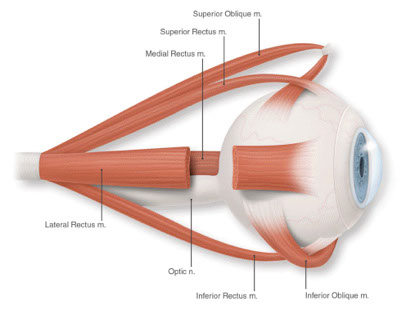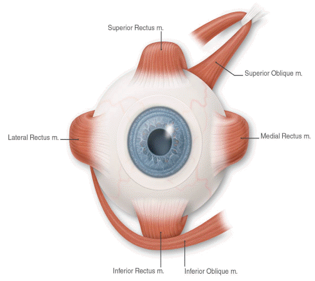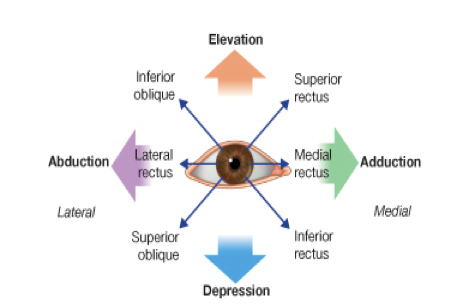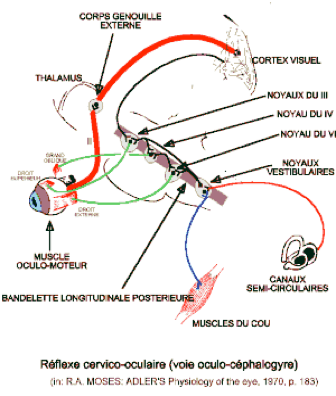Exteroception
- Retinal vision
Proprioception
- Extraocular muscles
The retinal vision
Foveal vision
Provides specific information to allow us to achieve action goals, e.g.
- For reaching and grasping an object – specific characteristic info, e.g. size, shape, required to prepare, move, and grasp object
- For walking on a pathway – specific pathway info needed to stay on the pathway
Peripheral vision
- Detects info beyond the central vision limits
- Provides info about the environmental context and the moving limb(s)
- Gives a general impression of the situation


The extraocular muscles physiology
Medial Rectus (MR)
- Moves the eye inward, toward the nose (adduction)
Lateral Rectus (LR)
- Moves the eye outward, away from the nose (abduction)
Superior Rectus (SR)
- Primarily moves the eye upward (elevation)
Inferior Rectus (IR)
- Primarily moves the eye downward (depression)
- Secondarily rotates the top of the eye away from the nose (extorsion)
Superior Oblique (SO)
- Primarily rotates the top of the eye toward the nose (intorsion) * secondarily moves the eye downward (depression)
Inferior Oblique (IO)
- Primarily rotates the top of the eye away from the nose (extorsion) * secondarily moves the eye upward (elevation)

The extraocular muscles constantly inform the brain to the position of the eyeball.
Cervico ocular reflex stabilize the image on the retina.

